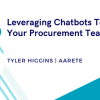‘Overcoming deployment obstacles’
In the second of our three-part series on automation, Enate CEO Kit Cox looks at how organisations can overcome deployment obstacles and ensure their automation projects run smoothly.
Previously, we looked at how business owners and department decision makers can struggle to see the benefits of automation. Happily, for the enlightened among us, we confirmed that automation as a driving force for positive change within a business is very real.
Unfortunately, simply deciding to adopt Robotic Process Automation (RPA) solutions isn’t a silver bullet that guarantees automation success. Whether it’s perceived cost, (misplaced) faith in legacy systems, or fear of the unknown, many projects fail to get off the ground.
From my perspective, these are the three key barriers to automation success, and what you can do to overcome them:
- Budget
With emerging technologies, lack of budget is always a stumbling block. This is normally due to lack of “proof.” Because we’re still early in the maturity curve, many organisations can’t be specific enough on how they will use automation to save money. This doesn’t exactly whip up a fervor among stakeholders.How do we ease their concerns? By employing Robotic Service Orchestration (RSO), companies can offer an unbiased view of the true cost and performance of an automation service. This perspective helps projects to progress beyond the pilot stage by demonstrating a clear business benefit, unlocking investment whilst simultaneously making organisations’ RPA initiatives more efficient in themselves. - Trust
Ensuring you have the budget to meet your automation goals is one thing, but it’s just as important to engage the workforce as it is the C-suite. Getting RPA programmes up and running relies in part on a happy human workforce who are willing to accept automation as part of working life. And for this to happen, everyone has to trust and value RPA, and see it as better than the status quo. RPA platforms have been designed to be excellent task bots: correctly programmed, they are exceptional at doing the same things over again very efficiently. What they haven’t been designed to do is manage an end-to-end service. If they are used for this, the results won’t necessarily meet expectation. This fosters mistrust amongst human workers who feel they’re working around, not with, automation, and this resistance will stymie your automation objectives early on. RSO makes for more transparency alongside greater efficiency, allocating and monitoring tasks that are well suited to automation. Much like a high-achieving colleague, automation can therefore be trusted more by co-workers to successfully get on with the job in hand. - Driverless cars are extremely safe, and make fewer mistakes than humans. But how many people would be willing to take their hands off the wheel? A similarly risk-averse mentality affects the adoption of automation projects for many companies…decision-makers don’t want their business-critical processes “at the mercy” of automated systems.However, while Governance and Risk Control (GRC), and security are top concerns, the reality is that these areas often benefit from the application of automation technologies. Digital labour cannot be socially engineered, and because all activity is logged, GRC and security issues are actually improved by RSO. RSO fills the gaps left by RPA, allowing you to create and manage the map for your entire automation journey. Deploying RSO first allows you to rapidly get visibility and control of all the processes and tasks involved in service delivery, reducing risk significantly. And don’t forget, through RSO, you can always ensure an element of human supervision to avoid your ‘bots making errors that could damage the business. So, whilst there are always going to be sticking points when it comes to rolling out your shiny new automation system, it’s not impossible to iron out the creases. By being smart about your RPA/RSO solutions, traditional hurdles like budget and risk-averse stakeholders can be overcome with relative ease. Know what to automate, know how to show business benefit and get your human workers onboard. Tick those boxes, and you’ll be well on your way to automation success.
Look out for the final part in our Three stages to back office brilliance series, when we’ll look at the best ways of creating a collaborative human and robotic workforce.









